Camiguin Island has two excellent qualities. The first is its small size. At a mere 237.95 square kilometers, it holds the distinction of being the second smallest province in the Philippines. It is so small, that devotees on a Holy Week penance say that you could circle the entire island on foot in one day. While you can certainly choose to do that, I would not recommend you squander your precious limited vacation time on a potentially debilitating protracted walk. After all, there is a great deal to see and enjoy in Camiguin, which takes us to its second exceptional quality — its abundance in natural and cultural attractions.
Despite its compact land area, Camiguin is so rich in enchanting spots it’s actually impossible to visit all of them in a short span of time. So if you had just 17 hours or a little over two days to spare, here’s a list of top ten places to see in Camiguin based on my own two day itinerary.
1 – Sunken Cemetery
Bonbon, Catarman
Declared a National Cultural Treasure by the National Museum of the Philippines,[1] the site features a large cross protruding from the sea and marking the spot where a Spanish colonial era cemetery lies underwater. The cemetery sunk during the 1871 eruption of Mt. Vulcan (Volcan).
A quick early morning or late afternoon stop will be more than enough time to capture a peaceful and reflective moment. But if you had more time to hang around, snorkeling and diving equipment are available for rent so you can see what lies beneath. By recent accounts, it seems parts of the cemetery are still visible, but most of its man-made structures have fittingly surrendered to the embrace of nature and is now overrun by teeming marine life.
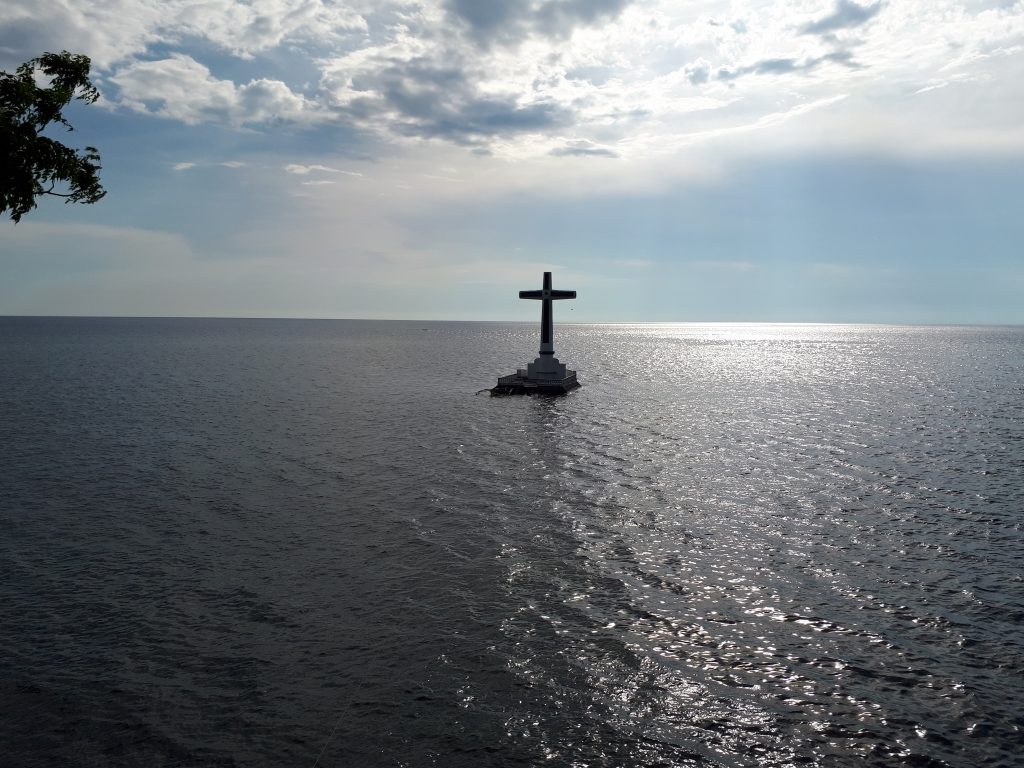
2 – Old Church Ruins
Bonbon, Catarman
Not far from the Sunken Cemetery is another casualty of the 1871 volcanic eruption, the Old Bonbon Church Ruins, also a National Cultural Treasure.[2] Next to the church ruins are the remnants of its bell tower and rectory. In older travel articles, the site was known by its other popular name, the Old Guiob Church Ruins. While I cannot trace the exact date and reason for the name switch, I suppose local authorities may have discreetly relabeled the spot for reasons of accuracy. It is after all, located squarely within Barangay Bonbon.
The ruins, of course, are Instagram worthy, but that’s not all. The century old walls offer a chance for the prayerful to pause and send a whisper to heaven, or for the culture and history buffs life myself to ponder. I wondered what it was like for the devout residents of Catarman on the day Mt. Vulcan blew its top and devastated their church and their entire town? And would our Spanish colonizers have stayed if mother nature had proven even more inhospitable at more regular intervals?
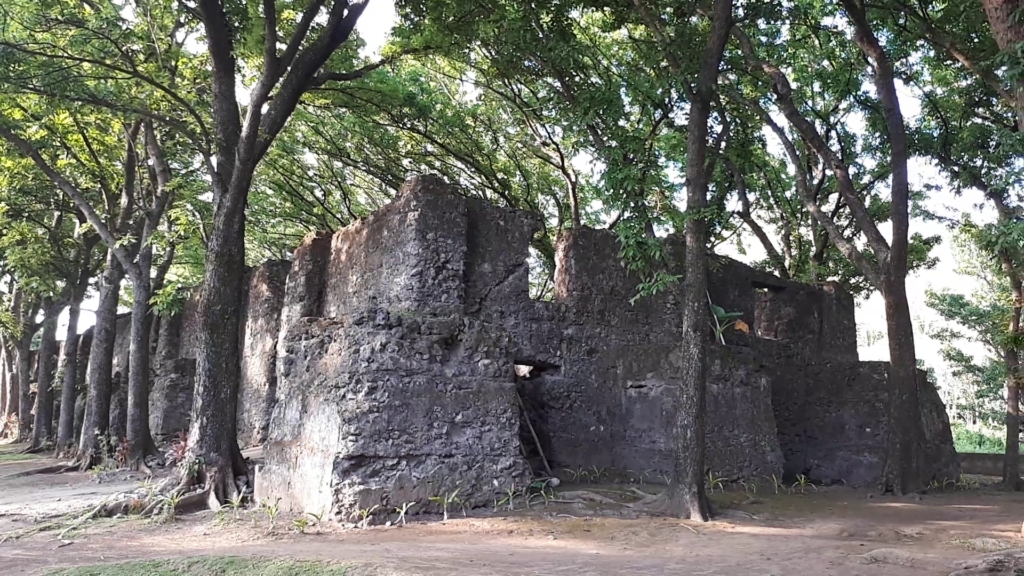
3 – White Island
Agoho / Yumbing, Mambajao
Camiguin’s White Island is essentially a sandbar best visited early in the morning or at 4 p.m. in the afternoon, the boatmen’s last trip, as there is no natural or man-made shade to ward off the hot rays of the sun. In any case, the more subdued hours of the day are the perfect times to enjoy the island. Other than a cool wade in the water, visitors can also snap an impeccable sunset or catch a perfect glimpse of Camiguin’s volcanoes.
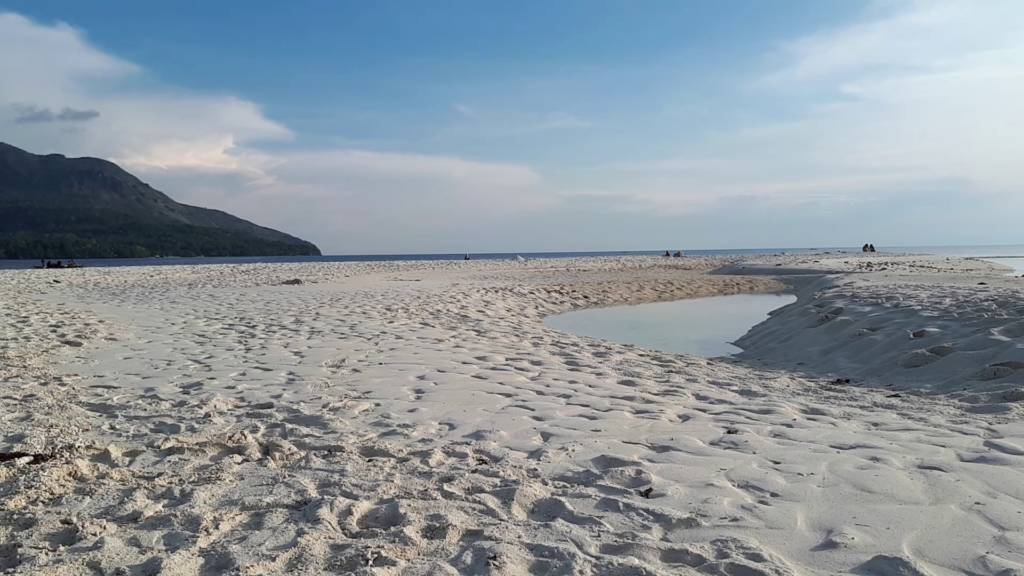
4 – Ardent Hot Spring
Tagdo, Mambajao
It was quite unfortunate that I visited Ardent in the evening, as the only thing visible on my camera was the dim lighting itself (photo below isn’t mine). I was able to fairly make out though, that the water flowed in between two rocky, wooded, stepped declivities; with one side set up with rental tables and huts.
The warm water is of course, courtesy of Mt. Hibok-hibok, and can supposedly run as high as 40 C.[3] Naturally, the water is warmest close to the source, which is also where most bathers congregate.
According to our guide, Ardent is one of the older attractions in the island, perhaps implying a more dated feel to it. That would not be a deal breaker at all if not for some flaw stemming from human traffic, that is, the contrast of colored bottle caps against the dim surroundings. No doubt, as evidenced by the staff scurrying about, that the place is cared for. That puts any imperfections squarely on the actions of visitors. I wish travelers would take better care of the gifts of nature.
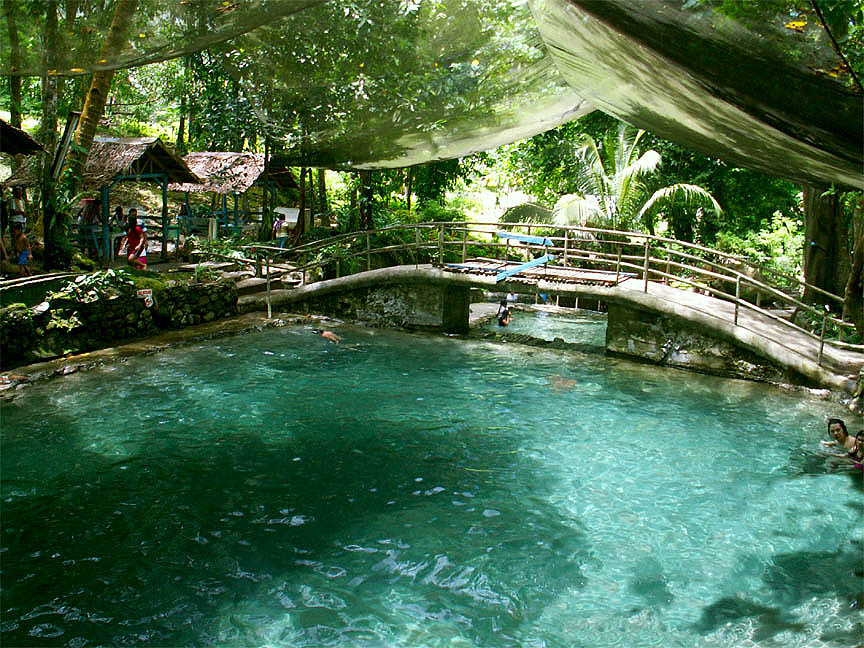
5 – Walkway to the Old Volcano
Bonbon, Catarman
Any nature lover’s ultimate Camiguin travel goal must be to hike up one of its five volcanoes and nine volcanic domes[4], perhaps the most popular Mt. Hibok-hibok, or the most imposing Mt. Timpoong, together celebrated as a Natural Monument and ASEAN Heritage Park.[5] For those with little time and littler physical preparation, such a goal may prove disastrously injudicious.
For a quick, less physically daunting hike, aim for a trip halfway up Mt. Vulcan (Volcan) via the Walkway to the Old Volcano in Bonbon, Catarman. Part of the way up is helpfully paved, but reverts to a narrow but fairly straight dirt path, the entire stretch of which is dotted by painted sculptures denoting the 14 Catholic Stations of the Cross. One of the best parts of the hike is of course the view from above.
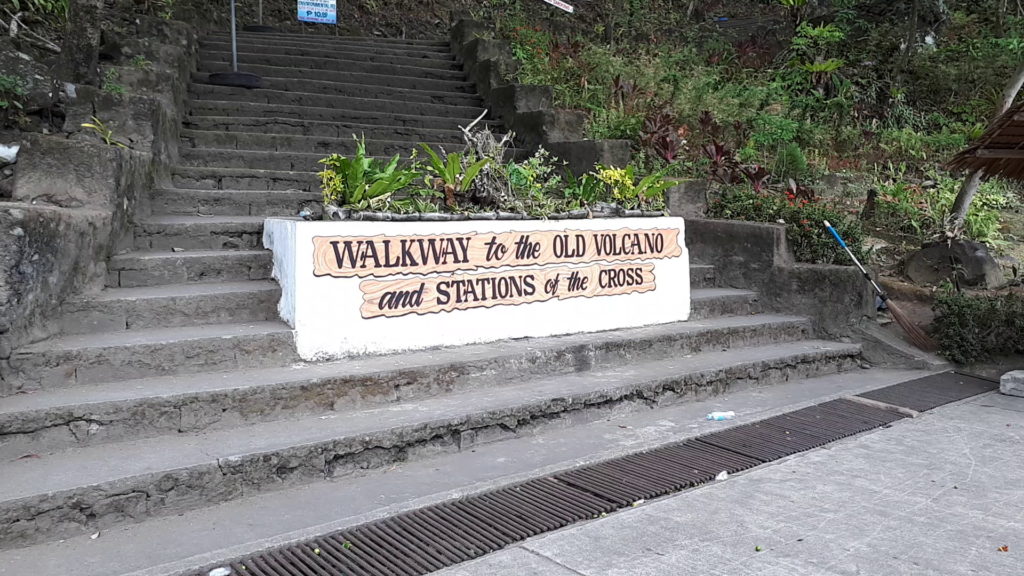
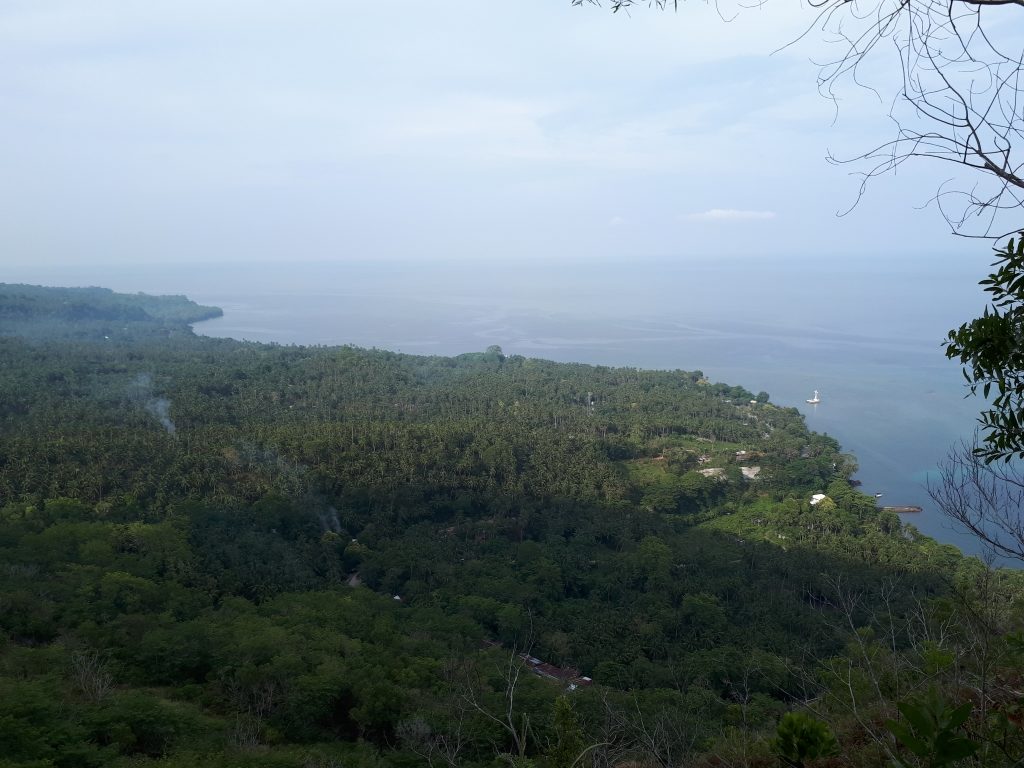
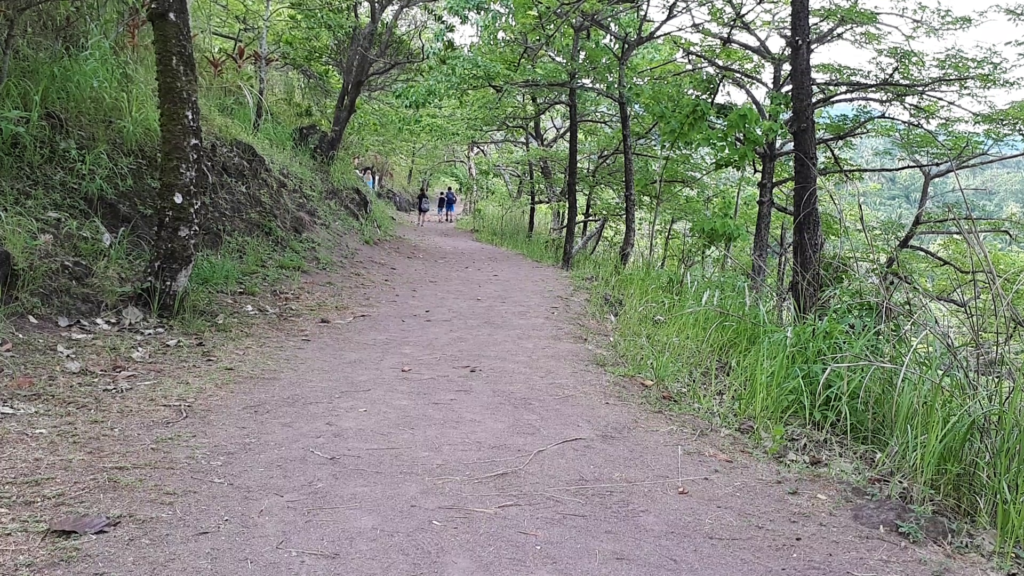
Mt. Vulcan hike path
6 – Tuasan Falls
Mainit, Catarman
This piece of pristine nature looks like it was intentionally hewn out from the very center of a mountain by the creator. Steep cliffs dotted with greenery on two sides frame the rapid gush of fresh water streaming into a pool, and everywhere the dominant sensation is coolness and relaxation.
Apparently, its seemingly untouched appearance may be owing to the paved roads leading to it only having been recently developed. In the past, getting to Tuasan meant hiking an unpaved trail. Let’s hope developing the area doesn’t spoil this beautiful bit of nature.
While in Tuasan, make sure to drop by the food stall outside and buy a pack of sweet corn. It puts all other sweet corns to shame, as it is the physical manifestation of the taste itself. I had no idea sweet corn was actually really sweet until after I’d tasted their boiled corn on the cob.
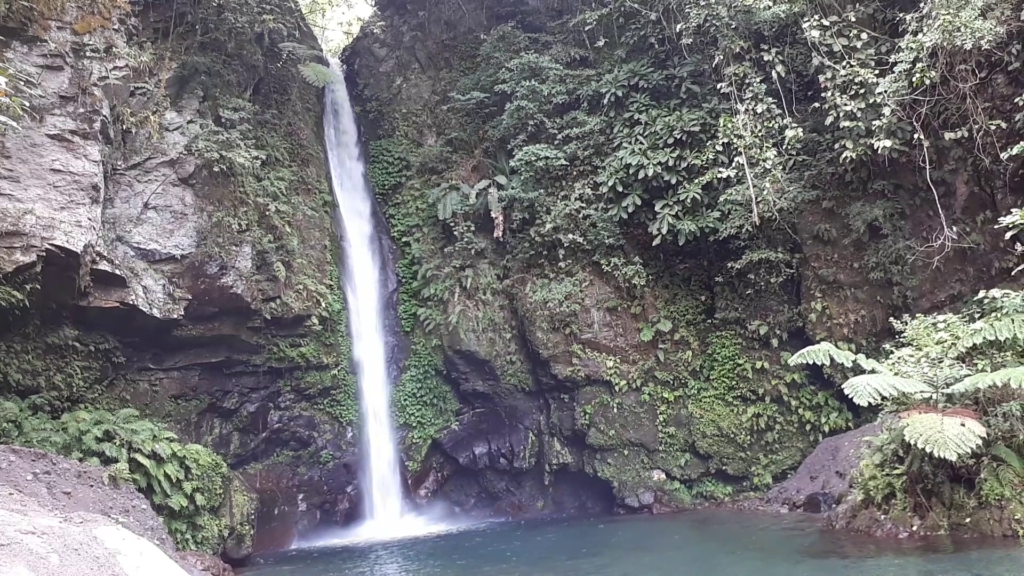
7 – Sto. Niño Cold Spring
Bonbon, Catarman
If you aren’t too fond of hot springs, take a dip in a cold one instead. Like most of Camiguin’s other natural attractions, this one is surrounded by lush nature. Unlike Tuasan however, Sto. Niño more markedly bears the signs of artificial development, with its cemented pool, steps, wooden huts and metal railings. If you are just around for a swim though, I suppose the signs of human enhanced surroundings won’t matter too much.
A word of warning though, if you don’t have a high tolerance for the cold, the waters at this spring can pierce you to the bone. If you’d rather sit out a cold dip, you have the option to just rent a plastic table by the spring and sample some of the local cooking available to order.
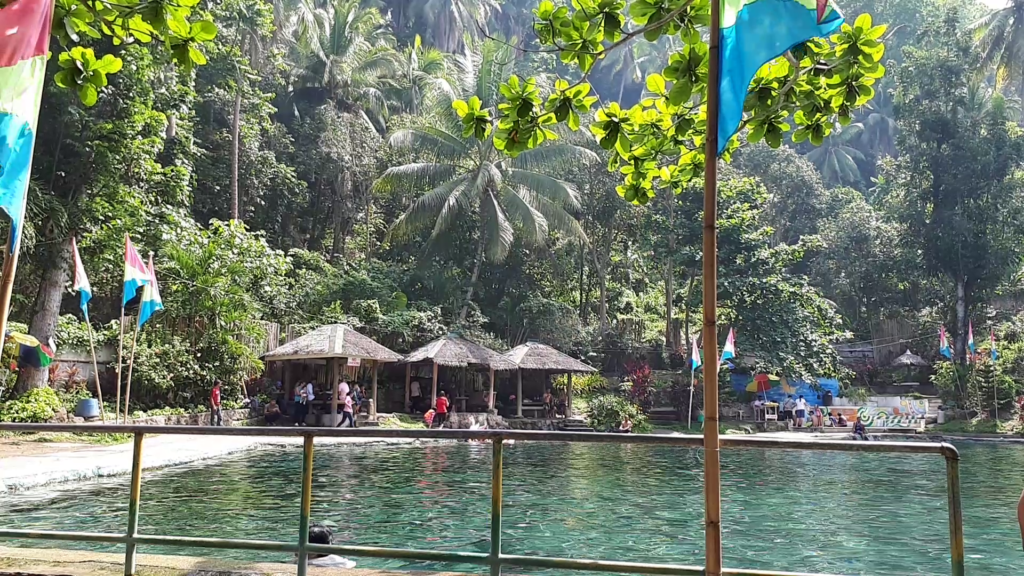
8 – Mantigue Island
San Roque, Mahinog
This island is decidedly more substantial in appearance than its sister white island across Camiguin. Peppered with a few trees and some shrubbery, it also has a number of wooden huts for rent and a restaurant serving grilled fish and pork or soup.
Mantigue is a protected spot, and all bipeds, both employees and visitors, must depart before nightfall. This makes an early visit with a full bottle of sunscreen a good idea, especially if you’re interested in communing with the underwater local residents of the island’s marine sanctuary.
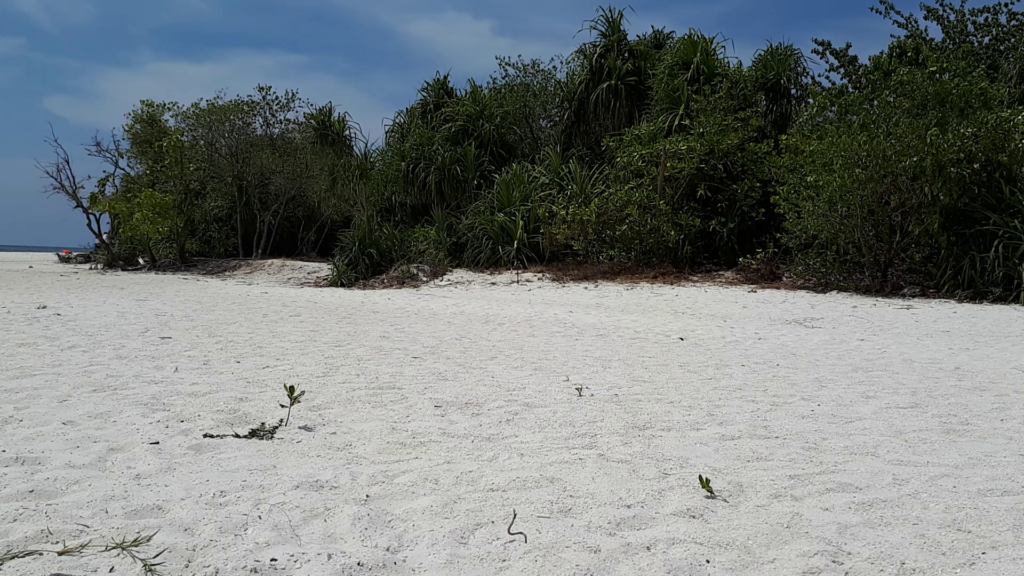
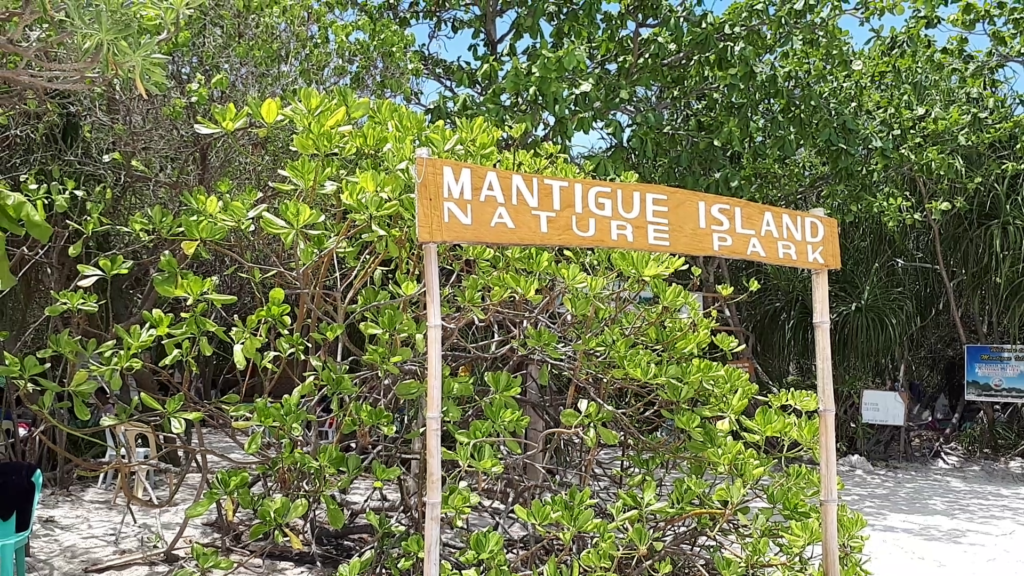
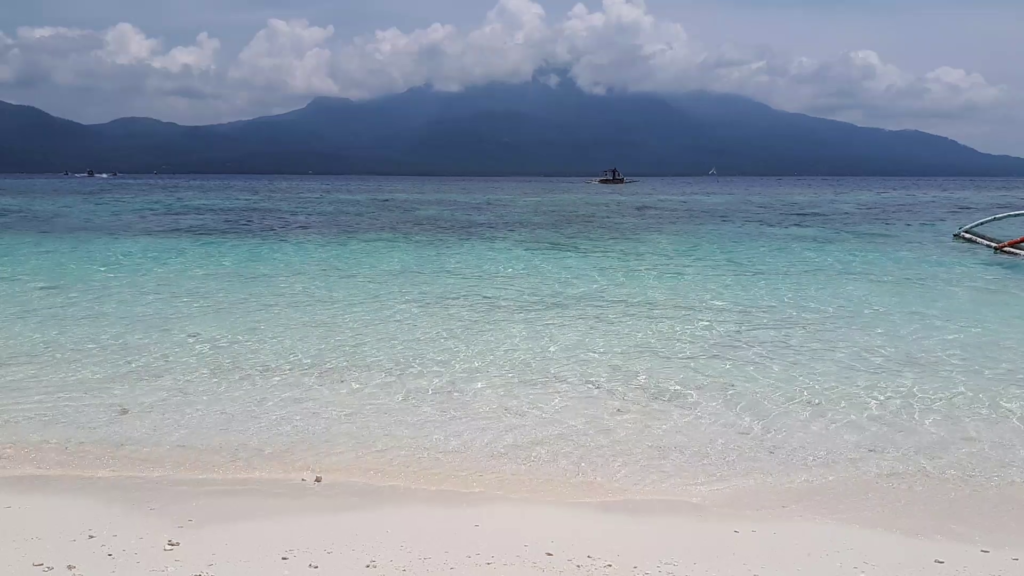
View from Mantigue Island
9 – Treasures Camiguin – Sea Glass Museum
Bug-ong, Mambajao
Even if you aren’t looking, this attraction is difficult to miss. Out of the corner of your eye, you’ll catch the purple exterior, an invitation to the curious.
It’s initial point of interest is the house itself. If I remember correctly, according to the staff, it is the ancestral house of the Balite family, refurbished and rented out for the museum’s use. Through its striking fresh paint radiates the unmistakable lines and features of Filipino architecture during the Spanish colonial period.
Inside, you’ll find sea glass jewelry, art work, an art gallery and a growing antiques collection. It is of course, the items made of sea glass that are the dominant feature. Sea glass is broken glass weathered, sometimes for decades by the salty sea or ocean, and is washed up onto the shore and fashioned into wearable ornaments or useful decorative items.
Purchasing an ornament or two would be quite commendable, as Treasures Camiguin is a community livelihood program spearheaded by the Komunidad sa Baibai in partnership with the Coalition for Better Education and the German Embassy in the Philippines.[6]
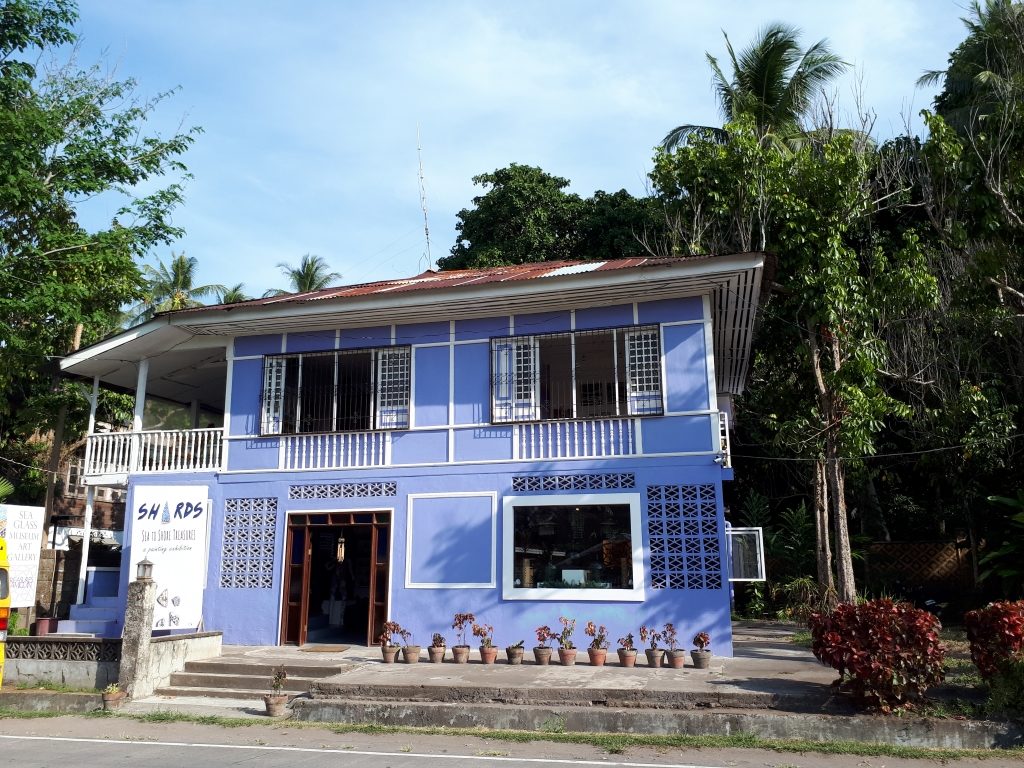
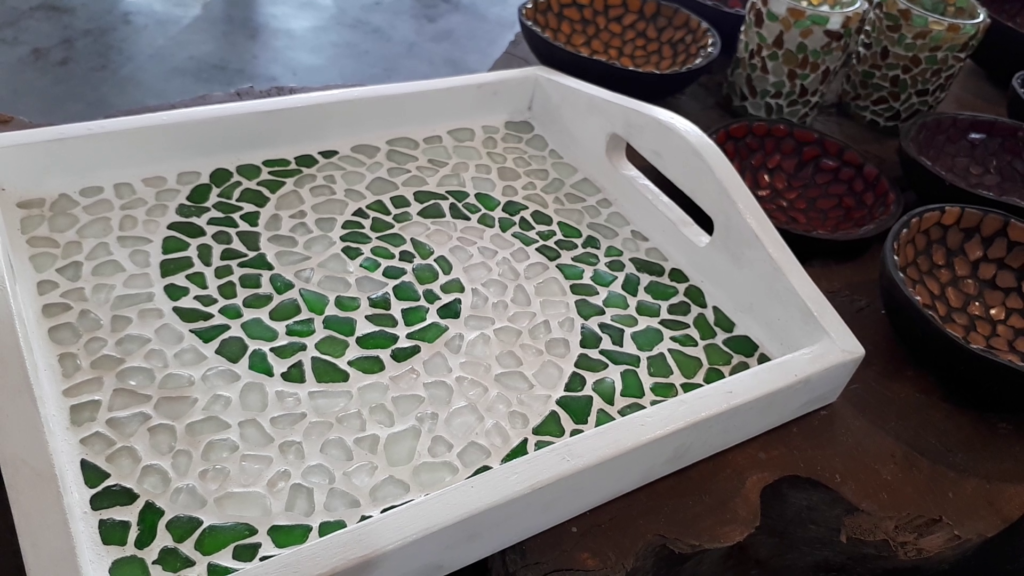
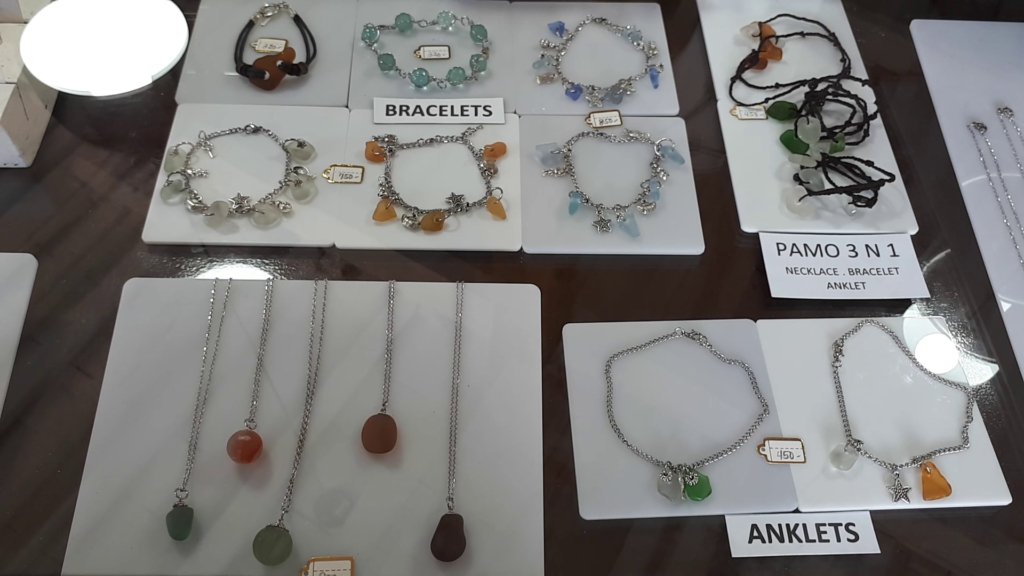
Sea glass jewelry
10 – Mambajao Ancestral Houses
Mambajao
Camiguin is teeming with colonial period house architecture, and the National Museum has declared 14 Camiguin ancestral houses Important Cultural Properties.[7] Even if you aren’t able to drop by some of the 14, there is still a lot to feast your eyes upon right by the roadside.
Close by the Sea Glass Museum, and dotting the Mambajao’s share of the circumferential road are other ancestral houses on display. Some unfortunately look more neglected than others, but all exhibit the classic architectural elegance of their time, with their capiz shell windows, carved callados, decorated ventanillas, and steep hip roofs. To the unaware, these old house structures deserve our attention and reverence because they are a true product of the evolution of Filipino culture and environment and not, as some incorrectly assume, forced upon us by Spanish colonizers.[8] But that is a topic for debate and discussion for another day.
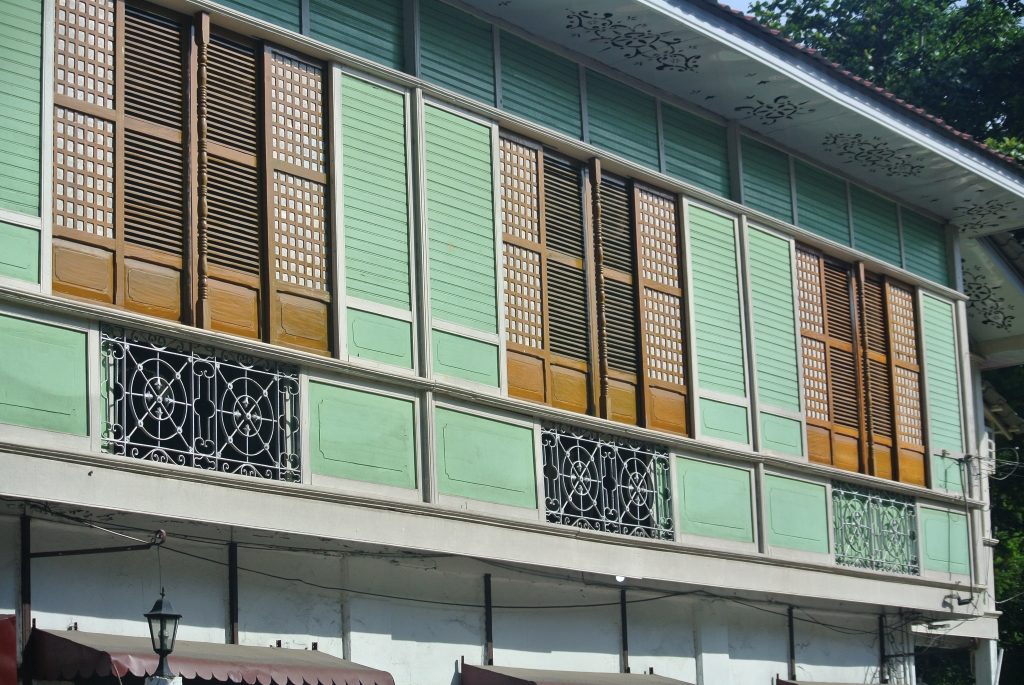
There is no doubt about it. Camiguin has the best spots if you’re a time-poor traveler looking for a full experience. But wait, there’s a great deal more. On your next visit, here’s a wish list of other Camiguin natural and cultural treasures to explore.
- Tangub Hot Spring
- Saal Cold Spring
- Mt. Hibok-Hibok
- Enigmata Treehouse & Sculpture Garden
- Katibawasan Falls
- Macao Cold Spring
- Ostrich Breeding Farm
- Agohay Black Sand Beach
- Bura Soda Spring
- Binangawan Falls
- Pamunglo River
- Sto. Rosario Church
- Moro Watch Tower
- Taguines Lagoon
- Giant Clams Sanctuary
- Kabila White Beach
Map of Camiguin Tourist Spots
Numbered red are the locations in my top ten list in the order I visited them. Green starred locations are from my wish list.
Related Reading:
- Is a Camiguin trip really worth it? Find out here.
- Read instructions on how to get to Camiguin Island here.
- Be prepared. Read tips to make the most out of your Camiguin trip.
Footnotes:
1. Sembrano, Edgar Allan M. “Camiguin church ruins, Sunken Cemetery declared National Cultural Treasures.” Philippine Daily Inquirer, December 17, 2018.
2. “Biyahe ni Drew: Chillin’ in Camiguin (Full episode),” YouTube video, 39:54, “GMA Public Affairs,” November 25, 2017, https://youtu.be/pF7yp_pn9hc?t=1010.
3. “Places to See,” Province of Camiguin, accessed October 6, 2019, http://www.camiguin.gov.ph/places-to-see.
4. Updated 20/01/20: “Kapuso Mo, Jessica Soho: Pilipinas: Bayan ng mga Bulkan,” YouTube video, 10:37, “GMA Public Affairs,” January 20, 2020, https://www.youtube.com/watch?v=ACAiCsGcJ34.
5. “Mt. Timpoong-Hibok-hibok Natural Monument to be designated as ASEAN Heritage Park,” Department of Environment and Natural Resources, accessed October 6, 2019, http://r10.denr.gov.ph/index.php/86-region-news-items/281-mt-timpoong-hibok-hibok-natural-monument-to-be-designated-as-asean-heritage-park.
6. Metro Channel Team. “These Discarded Sea Glass Are Upcycled Into Beautiful Jewelry By Camiguin Women.” Metro, August 9, 2019.
7. Sembrano, Camiguin church.
8. Fernando N. Zialcita and Martin I. Tinio, Jr., Philippine Ancestral Houses (Quezon: GCF Books, 2006), 6.
Recent Comments